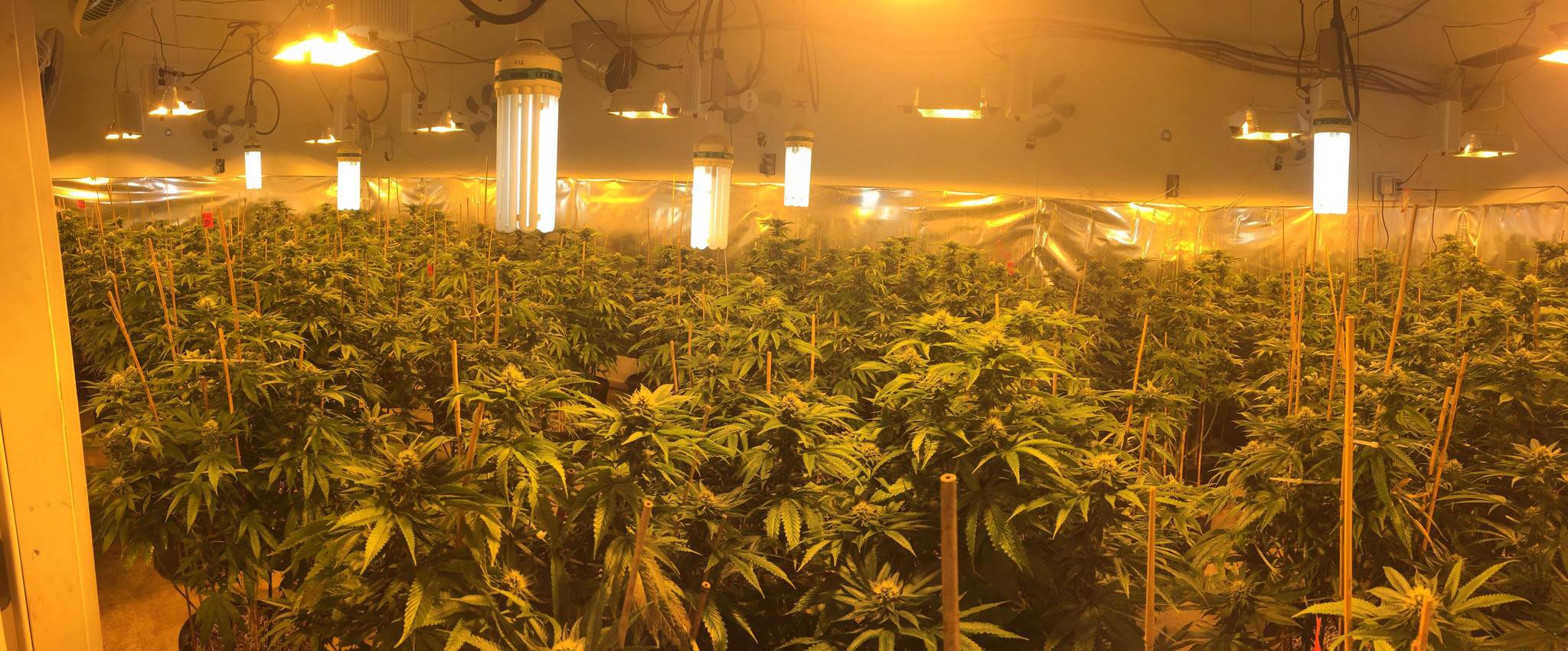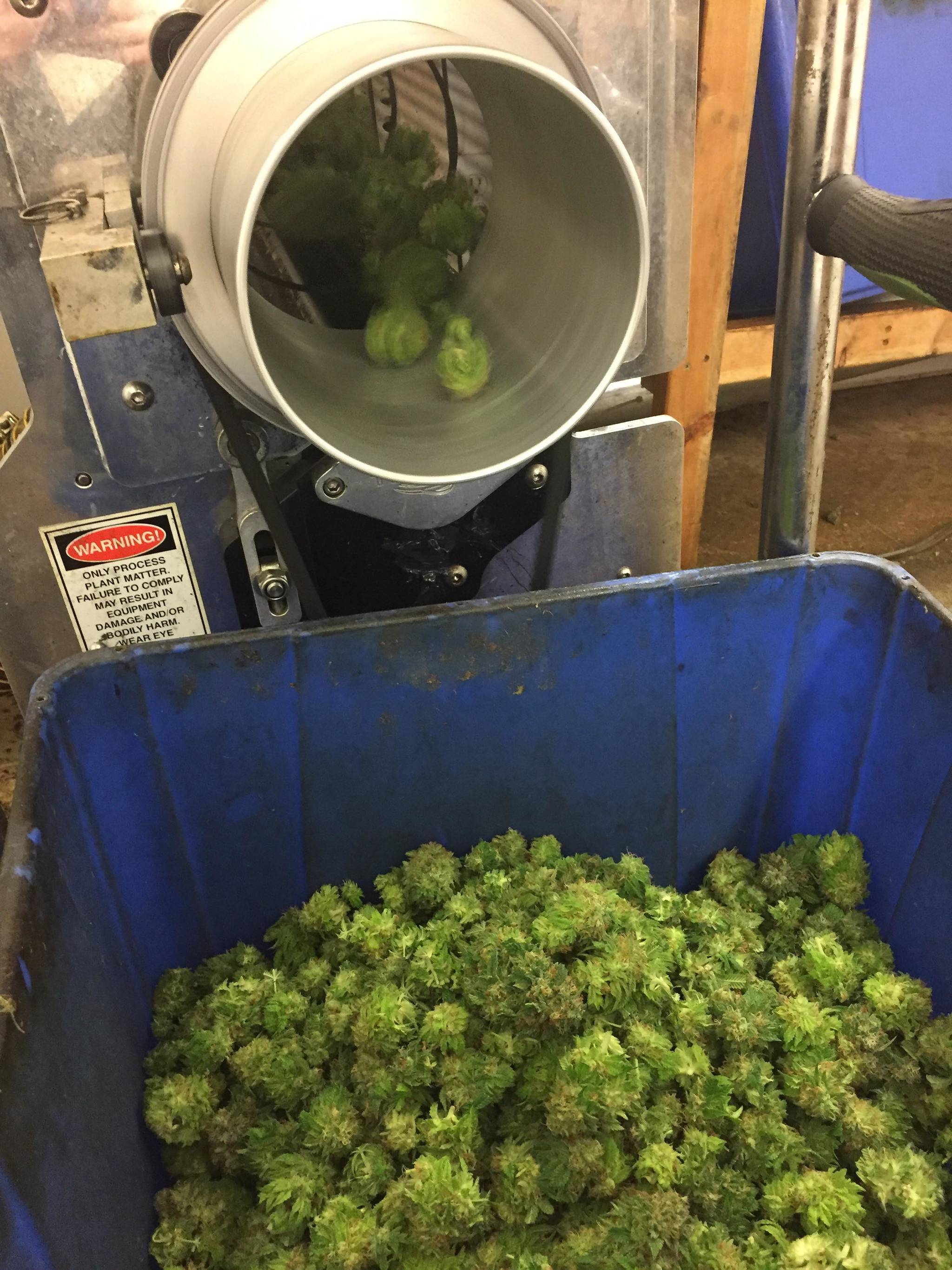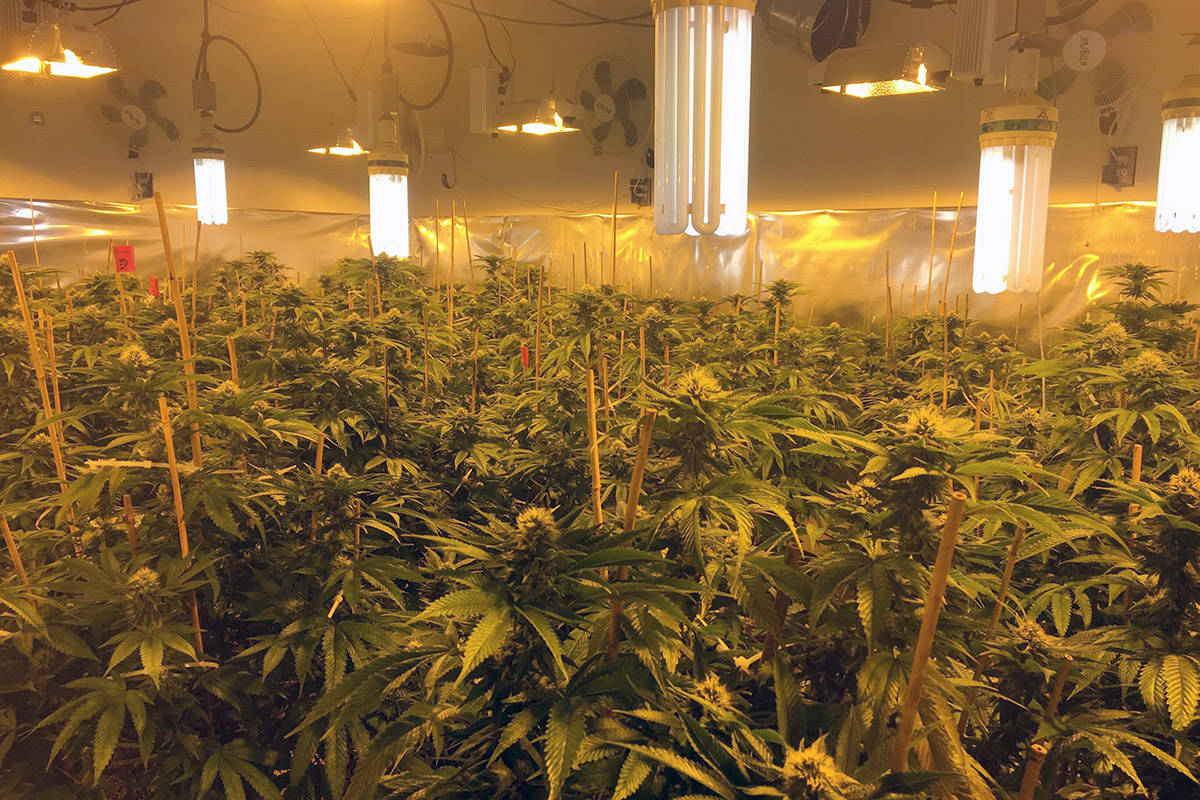Nestled in the heart of an Okanagan city sits a cannabis-production facility that’s been around for more than five years.
It is surrounded by other commercial buildings, and passersby likely wouldn’t notice the warehouse.
“Jim” a medium-to-large-scale cannabis producer invited Black Press to one of his sites under the agreement that his identity and location be protected.
Related: Vernon preps for cannabis legalization
Related: Marijuana legalization may go more smoothly than you think: Washington governor
Canada is only the second country — after Uruguay — to legalize recreational cannabis countrywide.
Though it was made official Wednesday, Jim said his existing business won’t be affected. He co-owns one of the largest grow-ops in the Okanagan. With multiple facilities housing 800 lights and ten MMAR licenses, he doesn’t expect to lose any clientele now that marijuana is legal nationwide.
“I think people are going to get a big surprise that it’s not going to change things much — not nearly as much as people think and a lot of [facilities] are shutting down because they don’t understand the law.”
Why? Before legalization on Wednesday, Canada went through various licences for people with terminal illnesses.
A timeline:
1999: Federal government allows two Canadian patients to smoke pot.
2000: Court rules Canadians have a constitutional right to use cannabis as a medicine.
2001: Canadian Medical Marijuana Access Regulations (MMAR) grant legal access to cannabis for individuals with HIV/AIDS and other illnesses. Authorized patients can grow their own pot or obtain it from authorized producers or Health Canada.
2013: New regulations change the Canadian medical marijuana access rules, shifting to licensed commercial growers for supply and away from homegrown (Over 37,000 people authorized to possess marijuana under the federal program)
2014: The federal government said the unforeseen growth of its medical marijuana program has “seriously compromised” the goal of providing the drug to patients while ensuring public safety. It says the number of people authorized to possess marijuana under the federal program has risen to 37,000 from fewer than 100 in 2001.
2014: Patients and producers authorized under the old regulations required to destroy stocks of pot and cannabis seeds, although a Federal Court has granted a temporary injunction allowing continued use of home-grown medical marijuana until legal arguments can be heard.
2018: Marijuana legalized across Canada under the Cannabis Act. Under this law, the Federal Government will be responsible for licensing and monitoring cannabis producers and for setting industry-wide rules and standards for the cultivation, processing, packaging and advertising of non-medical cannabis. Provinces and territories control the distribution and retail sales of non-medical cannabis within their jurisdictions. Municipal governments can regulate retail, cultivation, processing and research locations through their zoning authority, and some aspects of retail operations through their business licensing authority and have been asked to support the federal and provincial governments with public education.
Jim said that about six years ago he acquired a Designated Person Production Licences under Canada’s now-defunct Marijuana Medical Access Regulations (MMAR) that continues to allow him to grow cannabis plants. From this, he is legally permitted to supply dried cannabis as medicine to patients.
To explain the licensing, Jim uses the example of drug-related convictions.
“When someone got busted for a joint and convicted of a felony [known as an indictable offence in Canada], if the law was changed the next day, he would still have to serve his felony sentence of three years or whatever it was. These licenses work the same. They don’t just become void now that the government has set new laws.”
But sometimes, producers like Jim grow more than their patients will buy. They are required to destroy this excess cannabis but often don’t. Like most in his position, the excess will often “disappear,” sometimes winding up in dispensaries across the country.
The government has said that it wants to utilize the existing industry but the first big test for these cannabis entrepreneurs is whether they can draw the nation’s estimated five million existing consumers away from the underground market. Jim agreed. He said authorities aren’t prepared.
“The thing is that now you’ll have these new places and there are not enough producers by far. There are some big ones in Ontario but marijuana is a culture. The idea of people buying online and paying ridiculous prices doesn’t make sense and it’ll take a lot for that to happen. It’ll take a generation because people are so used to buying from their guy because their guy is going to have it for a lot cheaper.”
But what about policing? Public Safety Canada announced in September 2017 that it would invest up to $81 million in new law enforcement training to help officers weed out impaired drivers through a 12-step evaluation known as a drug recognition expert evaluation.
When a road stop occurs, the officer has two options. To investigate the individual for drug-impaired driving as part of a Criminal Code investigation, or to investigate them for drug-affected driving, as part of a Motor Vehicle Act investigation. In B.C., it’s likely that an officer will choose the latter because it’s easier to hold up in court.
Regardless of which the officer chooses, they will likely begin with a Standardized Field Sobriety Test — the same for alcohol-impaired driving. This involves a series of three tests: standing on one foot for 30 seconds, walking in a line and turning, and following an object with your eyes.
Police can also request a urine sample. If there has been consumption, these tests are likely to come back positive for marijuana. But, this still means relatively nothing as far as impairment goes because the test can only confirm whether the drug is present, not what impact this drug has on a driver’s sobriety. Further, THC (compound found in cannabis) can remain in urine for up to 30 days after consumption.
“The biggest flaw is the police have no way of determining — they can test for it but that will be challenged the minute it gets to the road,” said Jim. “If you are driving a car, you could have had some a few days ago and it would still show up. The other dilemma is that people use it as a medicine too. If someone is medically impaired and uses it for medicinal purposes, how does he not drive to work and how does he not take his daily medicine?”
In some ways, Jim has already been proven right. Provinces are pushing cannabis producers to speed up shipments after consumers lined up and cleared out much of retail inventory on the first day of legal recreational sales. Many believe it was too soon.
“It’s not going to change much for the people who used before now. It’ll take a decade and I think they know that. They’re trying to create an industry market for people of the next generation.”
Editors Note: Names have been changed for privacy purposes
Related: Tempering the Okanagan cannabis legalization ‘gold rush’
Related: B.C. city wants control over its cannabis advertising rules
Related: Marijuana facility on track in Vernon
To report a typo, email:
newstips@vernonmorningstar.com.
Follow me on Twitter @BrieChar
Email me brieanna.charlebois@vernonmorningstar.com
Like us on


